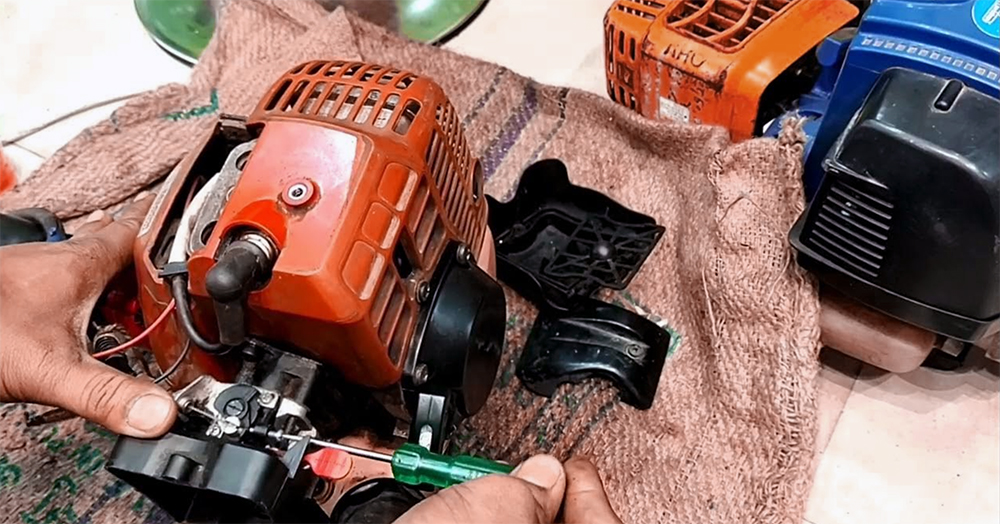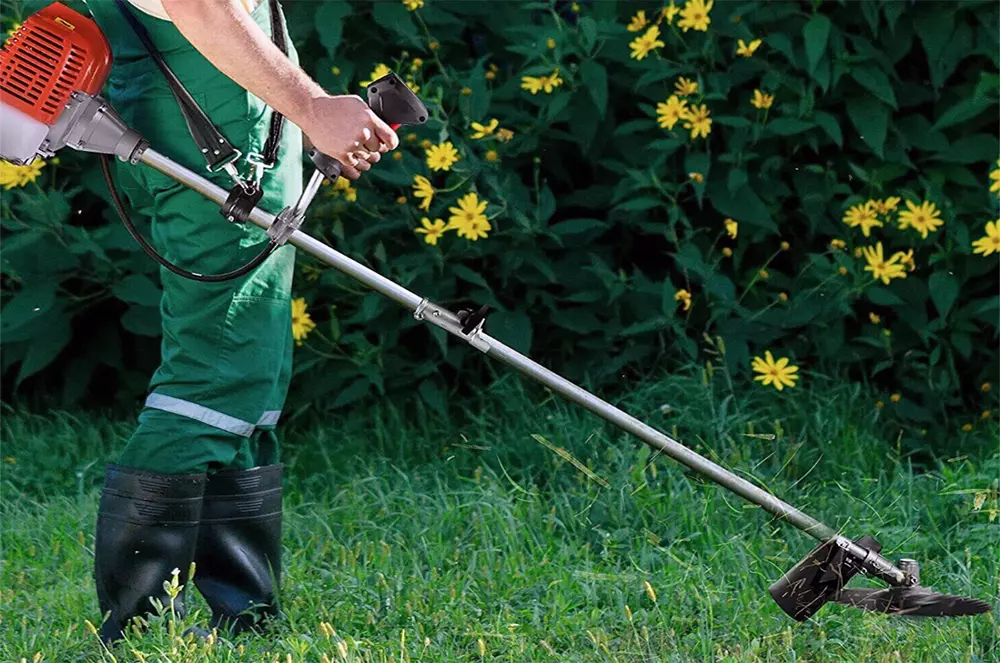27Oct 2023
table of contents

Maintaining your brush cutter is essential for optimal performance and longevity. An important aspect of maintenance is cleaning the engine carburetor. A dirty or clogged carburetor can cause poor engine performance, difficulty starting the brush cutter, and inefficient fuel consumption. In this blog, BISON will provide you with a detailed step-by-step guide on how to clean a two stroke brush cutter carburetor.
The carburetor is essential for proper fuel-air mixture in your brush cutter engine. Over time, dirt, debris, and residue can accumulate in the carburetor, causing clogs and reduced performance. Cleaning the carburetor ensures smooth fuel flow and optimal combustion, thereby increasing power output and fuel efficiency.
Recognizing the signs of a dirty or clogged carburetor can help you avoid potential problems. Some common signs of brush cutter, include difficulty starting the brush cutter, loss of power, rough idle,stalling, and increased gas mileage. when you're encountering any of these issues, need to focus on your carburetor.
When cleaning your carburetor, wear gloves when handling mechanical parts to avoid minor cuts and inconvenience.
Prepare your work space: Find a clean and well-ventilated area to operate your BISON brush cutter. Before starting the process, gather all the necessary tools and cleaning supplies. These include a screwdriver or wrench, a soaking container, carburetor cleaner or a mixture of gasoline and carburetor cleaning solution, and a soft brush or toothbrush.
Remove the carburetor from brush cutter: To clean the carburetor effectively, ensure proper cooling. Start by disconnecting the spark plug wire and loosening the screw holding the carburetor in place. Carefully remove the carburetor from the brush cutter, paying attention to all attached fuel lines. When disassembling the components, remember to pay attention to their assembly order for easy reassembly in the future.
Removing the carburetor: utilize either a screwdriver or a wrench to loosen and extract the fastening screws or bolts. Gently separate the carburetor into its individual components. Some carburetors may have additional small parts like springs and washers, so be careful not to lose them.

Rinse and dry: To clean the carburetor, simply full the container with either carburetor cleaner or a gasoline-carburetor cleaning fluid mixture. Place the carburetor parts into a container and soak for about 15-30 minutes. This will help remove dirt, debris, or residue. use a gentle brush to remove residual dirt after soaking. Rinse the parts thoroughly with clean water and dry completely before reassembling.
Reassembly of the carburetor: Refer to the BISON brush cutter owner's manual to ensure proper reassembly of the carburetor. Carefully put the cleaned parts back into place, making sure all gaskets and seals are properly aligned. Pay attention to the correct order and orientation of each component.
Reinstall the carburetor onto the brush cutter: Reinstall the carburetor onto brush cutter, ensuring it is aligned with the mounting hole. Securely fasten the carburetor in place by tightening the screws or bolts. Ensure a sturdy connection by reconnecting the spark plug wire securely.
Start the brush cutter and check for leaks: Start the brush cutter and let it run for a few minutes to make sure everything is working properly. Check for fuel leaks or abnormal engine performance. If necessary, make necessary adjustments. This step helps confirm that the carburetor cleaning was successful and that the brush cutter is running smoothly.

While cleaning your carburetor is crucial, there are a few other parts that also require attention during maintenance. The air filter is one such component. A dirty or clogged air filter can limit airflow to the engine, significantly impact your engine's performance. Make sure to clean or replace the air filter on a regular basis, following the guidelines provided by the manufacturer.
Additionally, the fuel lines and tank must be inspected for any signs of damage or blockage. Over time, fuel lines can become brittle or develop cracks, causing fuel leaks or insufficient fuel flow. Make sure the fuel lines are intact and free of any obstructions.
Regular cleaning of your brush cutter carburetor is an important part of its routine maintenance. By following the detailed step-by-step guide outlined in this blog, you can prevent these problems in advance or deal with them promptly. For more tips, tricks and product updates, visit the official BISON brush cutter website. Check out our range of high quality brush cutters to enhance your outdoor tasks.
Depends on how often you use your brush cutter and the condition of the fuel you use. It is recommended to clean the carburetor at least every season or whenever you notice signs of poor engine performance.
inquiry form here
BISON BLOG, All the latest news and views from Bison Machinery.